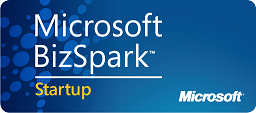No, it’s not a server person worried about their job. Dan Kusnetzky & Paula Rooney in their ZDNet blog What’s a DataCenter? It Depends on whom you ask, the authors asked different areas of the IT department what the term Data Center meant to them. This reminded me of a recent conversation with a new end user of a datacenter. Her interpretation was that Data Center was a negative term – and when viewed from her perspective, there’s no arguing.
In order to protect the innocent, I’ve changed the names. Lucinda is someone who spends 50 hours a week at her desk and on her computer helping other people do their work. Our friend, Lucinda, is a new forced convert to a cloud based CRM solution.
I asked her how it was going. She replied that it was alright, but what was the need for the big change? We discussed how her old CRM system was a “disconnected” database and her new one was “connected” or directly tied into the server. She was now going to be able to directly talk with the home office computer which was located in the data center.
She looked at me and said, “I don’t like the datacenter.”
Having described what I thought was the Scott McNealy (SUNW) dream of the 90’s, I asked her why? I described how it will save on IT costs and allow the field to be in synch with the home office and allow her organization to be quicker, nimbler, leaner and generate real time dashboards.
Based upon the look on her face, I tried to bring the concept to her world, “Remember the annoying 3-5 minute synch upon logging into the corporate network and how you would manually hit the synch button for someone in the home office to see your data changes?”
She looked at me and said “Great, now it takes 2x as long to get work done because every time I hit enter, it takes 5 minutes to get the screen to refresh.” She admitted it wasn’t that long in reality but “it sure felt like it.”
My takeaway is that SAAS, Software As A Solution, will continue to march forward. The end user should be kept in mind because the Lucindas of the world are entering the data business is trying to accurately capture.
We risk trading the rigors of manual synching for click-and-wait apathy. Before the Lucindas of the world may have suffered periodic annoyance waiting for a full data synch once or twice during the average work day, but now we risk a decrease in the amount of data captured where we force people to wait too long to enter it.
www.ipcalifornia.com

